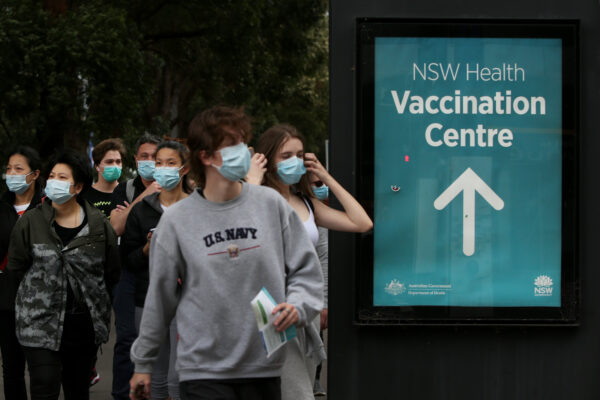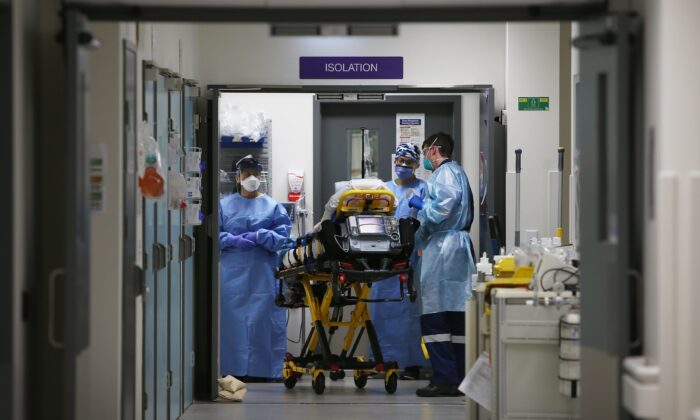For the first time, New South Wales (NSW) has seen more fully vaccinated patients hospitalised with COVID-19 compared to the number of unvaccinated patients as the Omicron outbreak continues to edge toward its peak.
Data published by the NSW government’s COVID-19 Critical Intelligence Unit has revealed that as of Jan. 9, 68.9 percent of COVID-19 patients aged 12 and over in hospitals had two doses of the vaccine, with 28.8 percent unvaccinated.
The number of double-dose vaccinated patients in intensive care units (ICUs) also surpassed those of the unvaccinated, with 50.3 percent of the vaccinated presenting to ICU with COVID-19, more than the 49.1 percent who are unvaccinated.
However, based on the data presented, unvaccinated individuals appear to be six times more likely to be hospitalised and nearly 13 times more likely to be sent to ICU than those who are fully vaccinated.
This is considering that the number of unvaccinated patients appears to be over-represented in the figures—7.3 percent of the NSW population aged 12 and over at the time were unvaccinated, but they made up half of the COVID-19 ICU patients in the NSW Health system. At present Australia does not permit alternative treatment approaches utilised and available in other countries, such as ivermectin and hydroxychloroquine.

According to NSW Health, 5.1 percent of people aged 16 and over have received the first dose of a COVID-19 vaccine, and 93.7 percent have received two doses as of Jan. 11.
The rise in the proportion of hospitalisations amongst the fully vaccinated comes both amid the spread of the Omicron variant of the CCP virus in Australia, along with the loss in the efficacy of the available COVID-19 vaccines.
A spokesperson for NSW Health told The Epoch Times on Jan. 11 that Omicron had supplanted Delta as the primary variant spreading in NSW, but that it also appeared to be less dangerous than its predecessor.
“The Omicron variant is associated with a lower rate of hospitalisation and ICU admission,” the spokesperson said.
While the state recorded 32,155 cases of the virus on Jan. 9, 2,030 were hospitalised, and only 159 had been sent to ICU. As of Jan. 12, the total number of cases has jumped to 53,909, with 2,242 hospitalised and 175 in ICU.
“NSW Health urges the community to continue to practise COVID-safe behaviours to keep themselves and the community safe, including wearing a mask indoors, maintaining physical distancing, and practising hand hygiene.”

The spokesperson also reminded those eligible to receive their third booster dose of an available COVID-19 vaccine—which can now be done four months after receiving the second dose—to raise the effectiveness of immunity granted by the vaccine.
“We continue to encourage everyone who has not yet done so to get vaccinated and anyone who is now eligible for their booster dose to get it without delay. The COVID-19 vaccines available in Australia are safe and very effective at reducing the risk of serious illness and death.”
In the United States, it has been reported that 2 out of the three available COVID-19 vaccines dropped below 50 percent efficacy after six months, according to a study published in November 2021.
To combat this, NSW has mandated booster shots for all education staff, joining other states that have implemented vaccine booster requirements.
NSW is also currently working to better understand the effects of the new COVID-19 variants.
“NSW Health is prioritising the whole genome sequencing of COVID-19 for patients in ICU in order to better understand the impact of both the Delta and Omicron variants,” the spokesperson said.

No comments:
Post a Comment